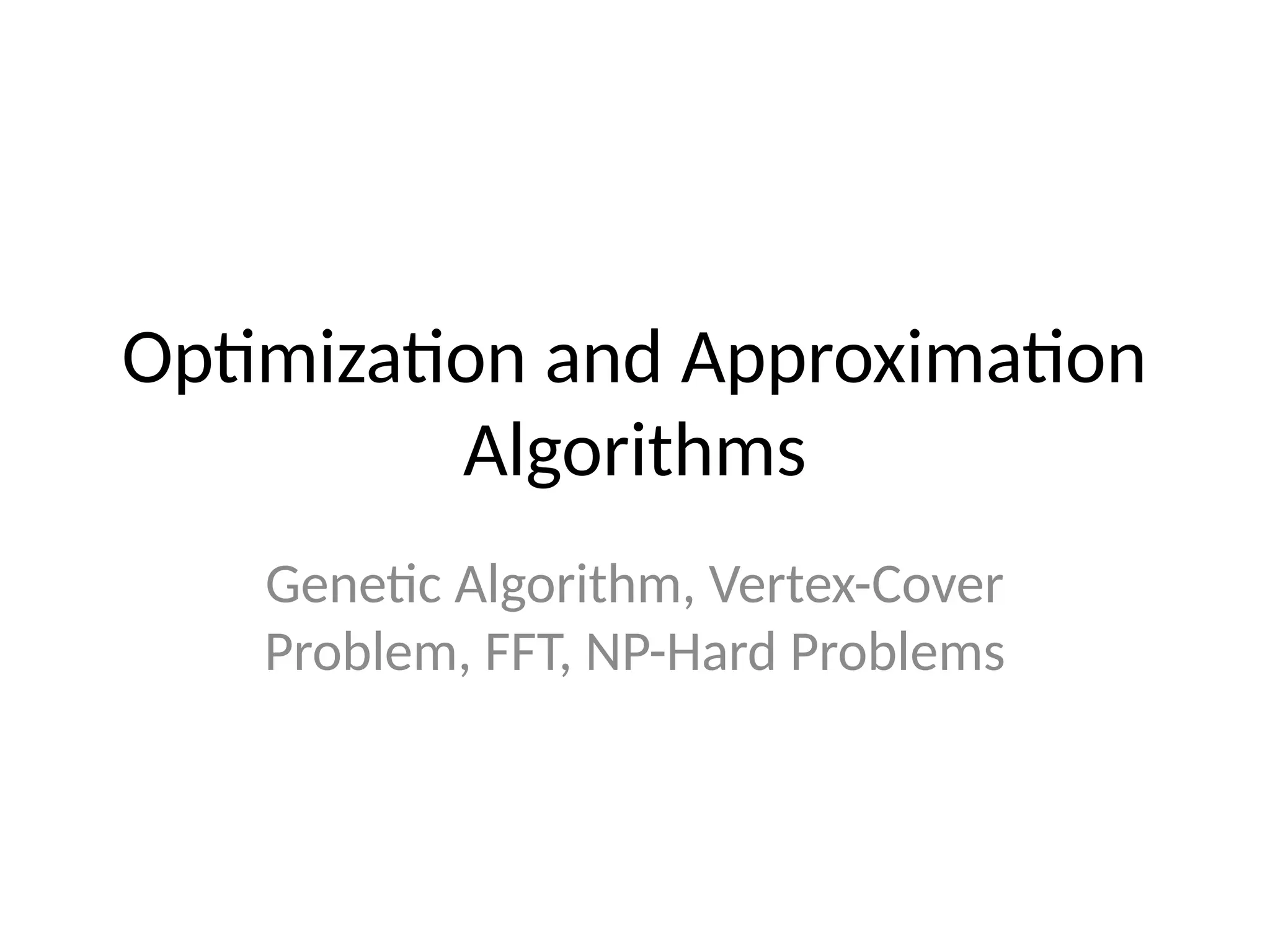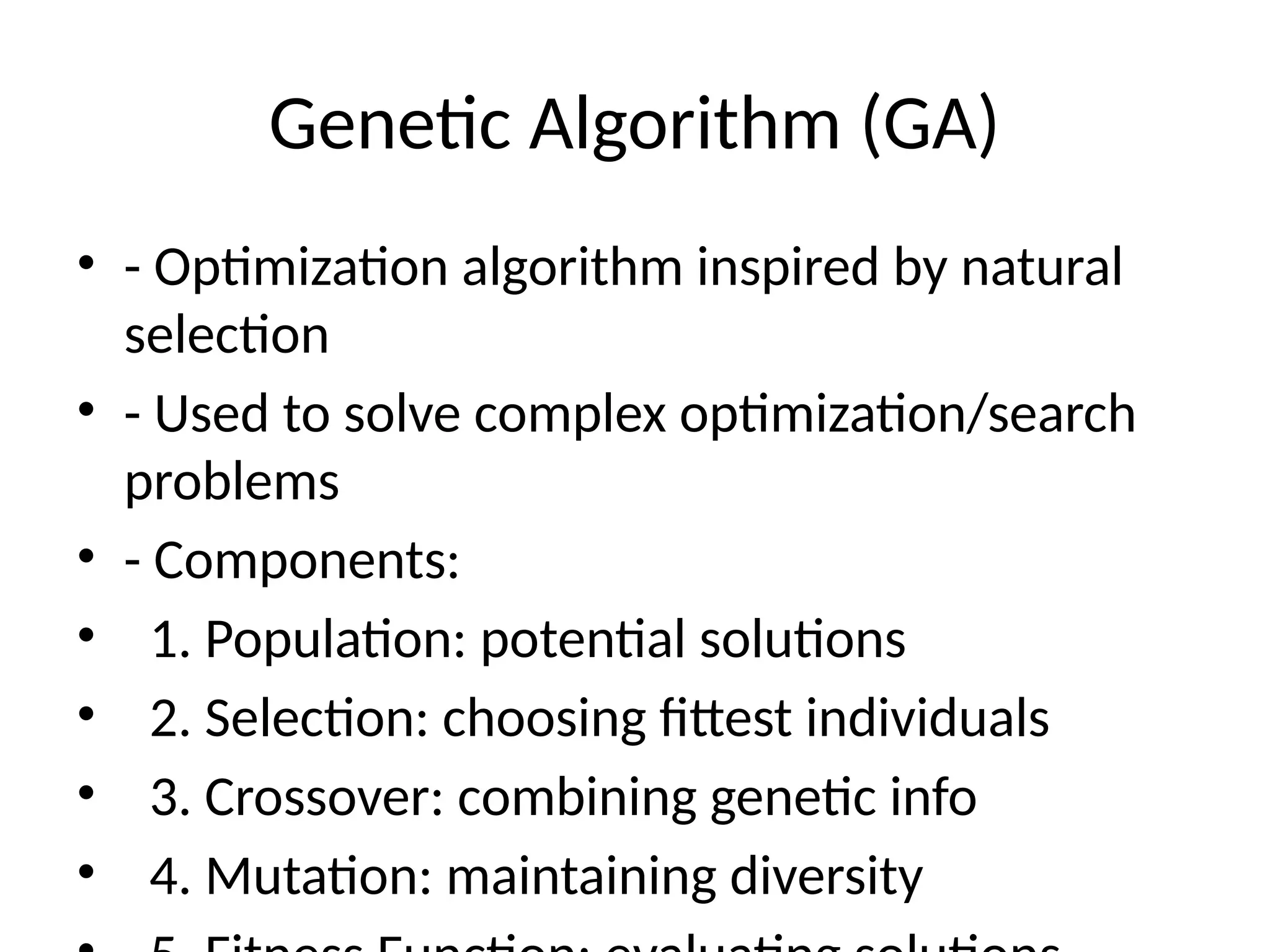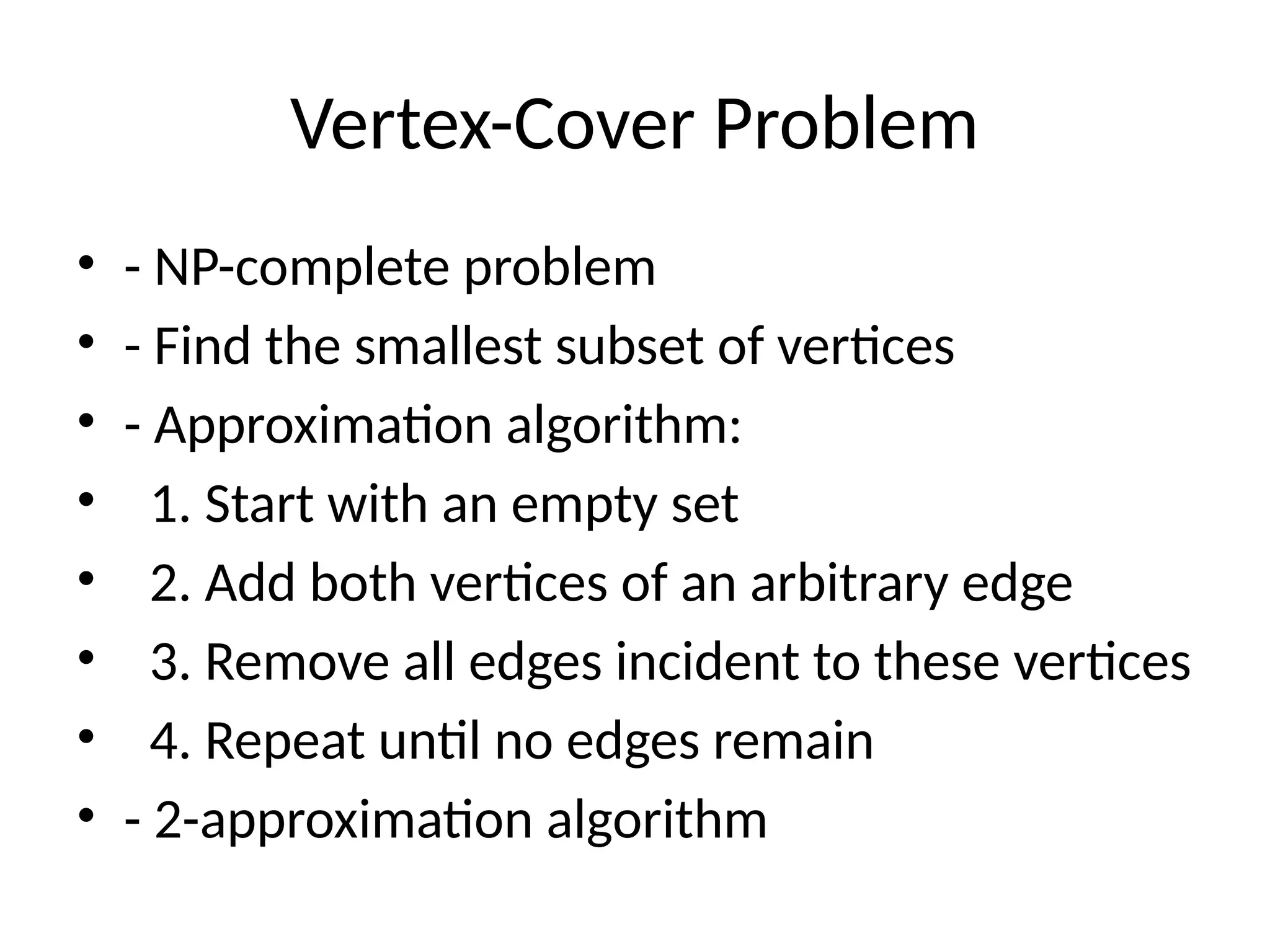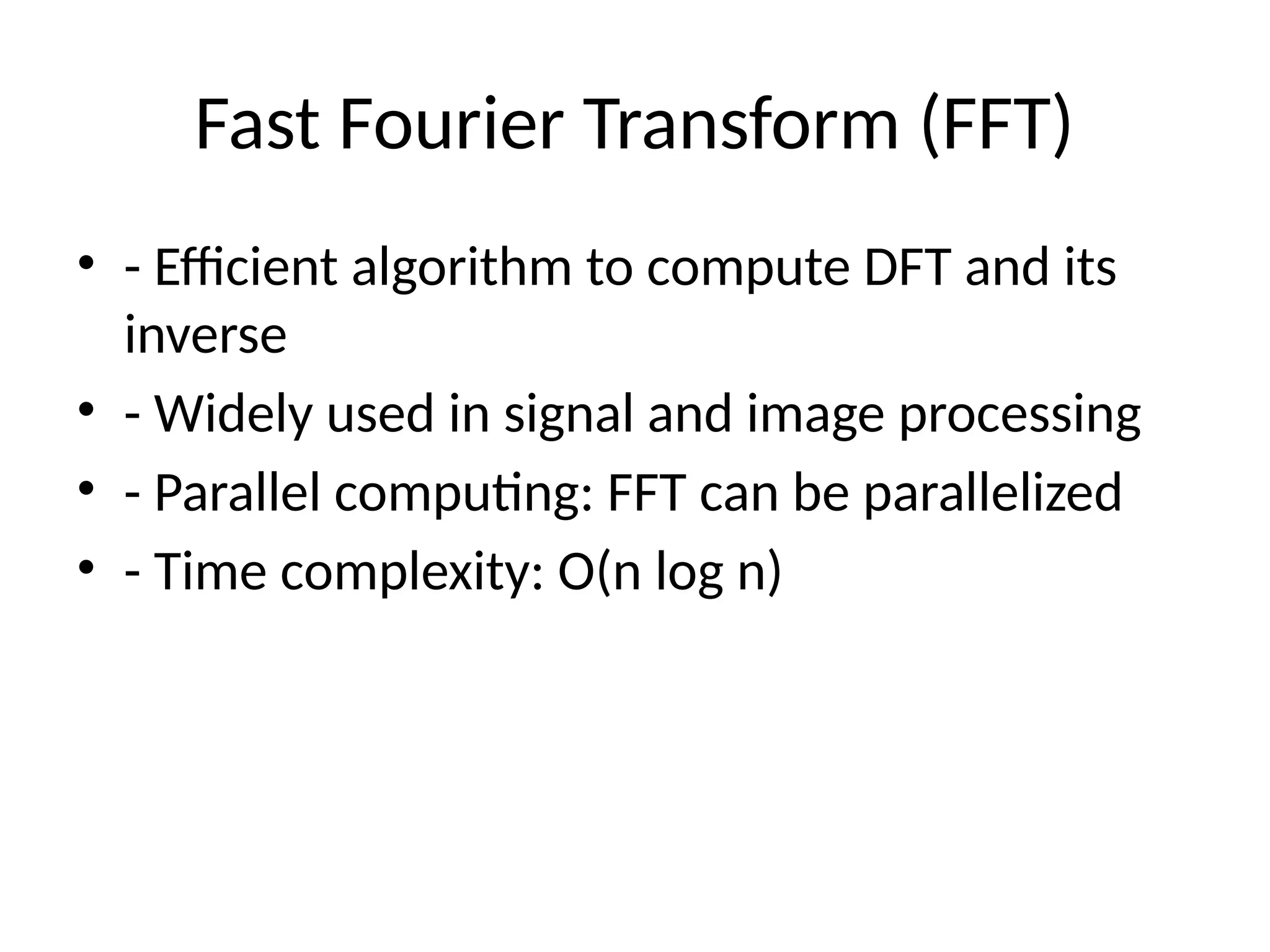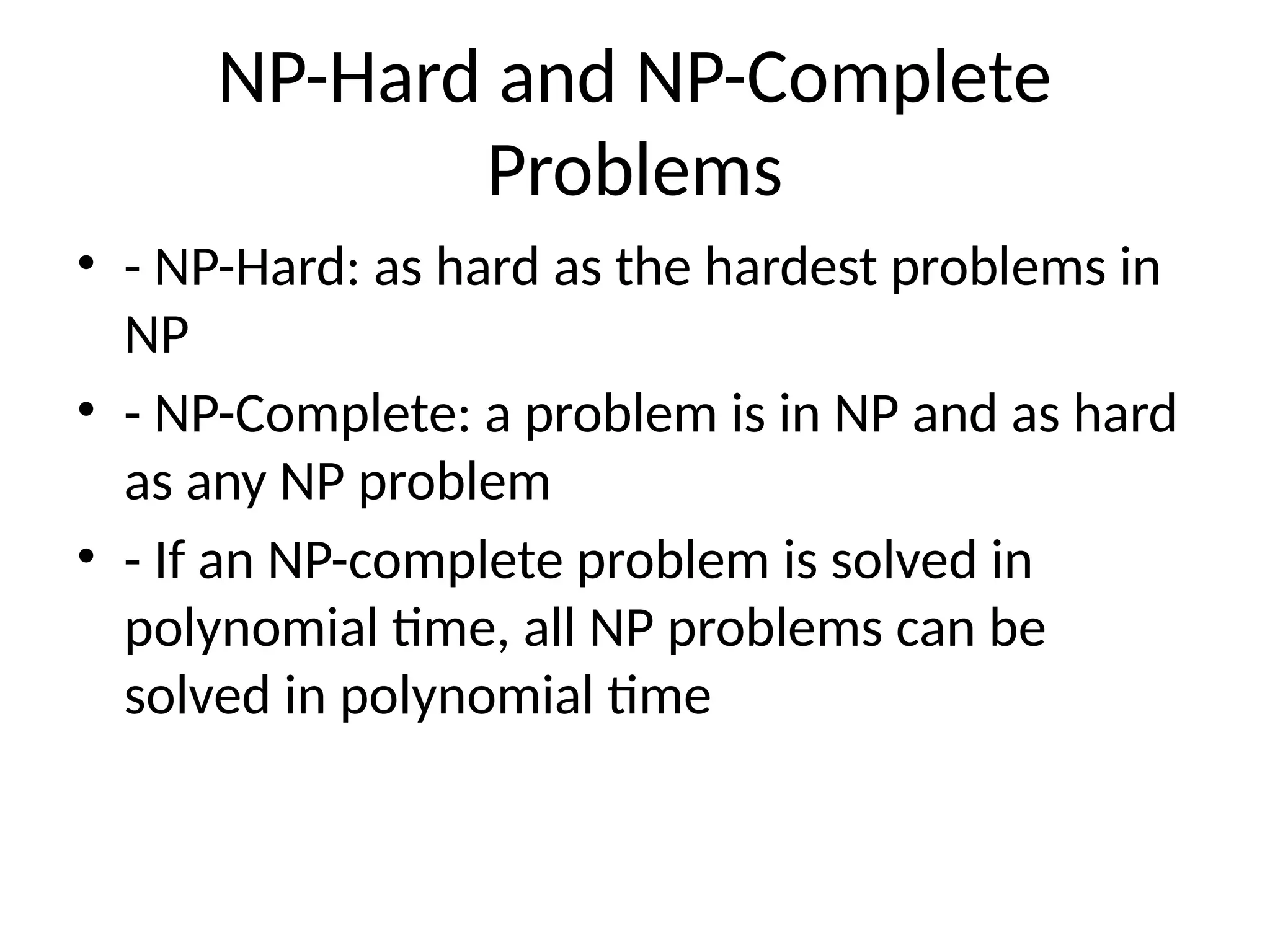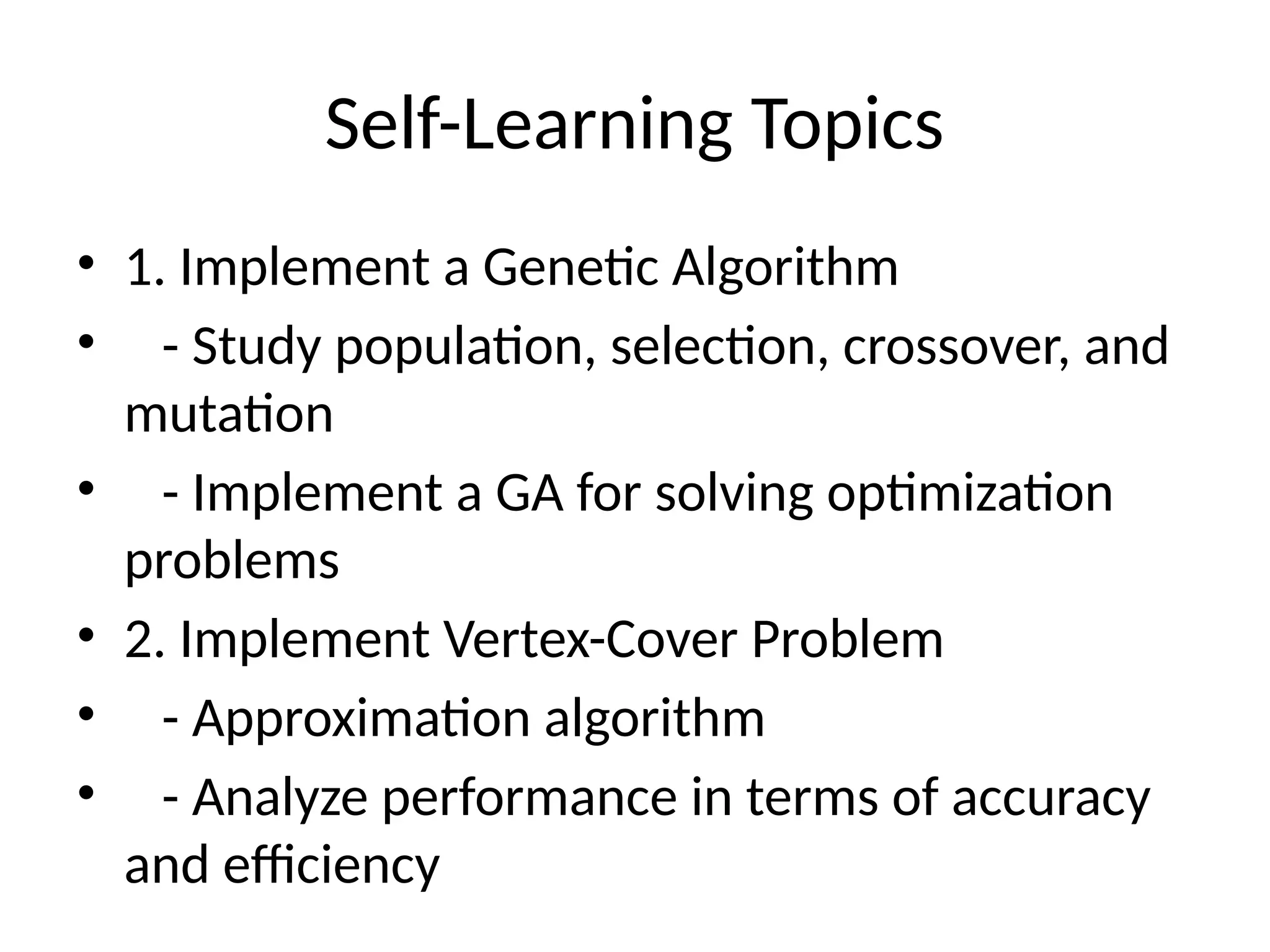The document discusses optimization algorithms, focusing on genetic algorithms and their application to problems like the vertex-cover problem, which is NP-complete. It describes the components of genetic algorithms and the steps for an approximation algorithm to solve the vertex-cover problem. The document also touches on the fast Fourier transform (FFT) as a key algorithm in signal processing, as well as an overview of NP-hard and NP-complete problems.
